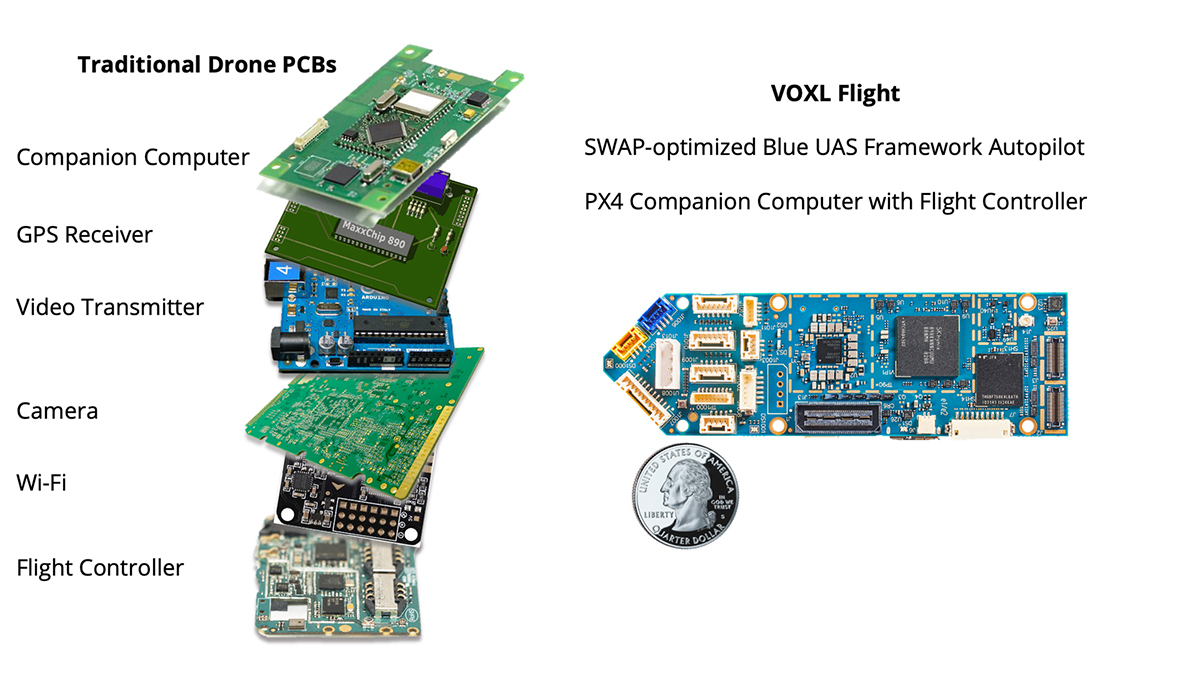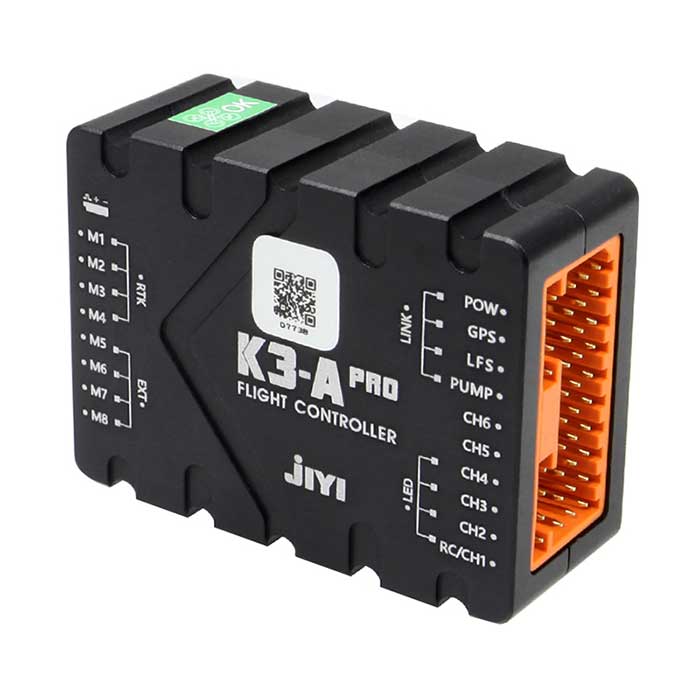The Future of UAVs: SparkNavi Drone Flight Controller and GNSS/INS Made in Taiwan
The Future of UAVs: SparkNavi Drone Flight Controller and GNSS/INS Made in Taiwan
Blog Article
Understanding the Important Functions and Features of a Drone Flight Controller for Optimal Airborne Efficiency
The flight controller works as the essential part in a drone's style, coordinating its activities and making certain stability with an advanced interaction of data and sensors processing. Understanding the vital functions and functions of these controllers is important for optimizing airborne efficiency, as they determine not just navigational precision yet additionally total security and reliability. With advancements in technology, the landscape of flight controllers is quickly progressing, triggering a better examination of what absolutely specifies ideal performance in this vital system. What ramifications do these advancements hold for both enthusiasts and professionals in the area?
Summary of Flight Controllers
When discovering the globe of drone innovation, recognizing trip controllers is necessary for both experts and enthusiasts alike. Trip controllers work as the brain of the drone, coordinating its motions and ensuring stability during trip (SparkNavi drone flight controller and GNSS/INS made in taiwan). They process information from numerous sensors, including accelerometers, gyroscopes, and barometers, to keep balance and react to pilot inputs effectively
The design of trip controllers can vary considerably, varying from basic versions created for entry-level drones to sophisticated systems outfitted with advanced functions for specialist applications. The integration of GPS capabilities makes it possible for exact navigating and positioning, while programmable firmware permits individuals to personalize trip characteristics to suit their certain demands.
In addition, flight controllers are pivotal in helping with interaction in between the drone and the push-button control, allowing real-time changes and telemetry information transmission. Recognizing the various kinds of trip controllers, consisting of multi-rotor, fixed-wing, and crossbreed systems, is crucial for selecting the suitable model for an offered application. Eventually, a detailed understanding of trip controllers not only improves the flying experience yet additionally makes the most of the performance and safety of drone procedures.
Key Features of Flight Controllers
Flight controllers play a critical role in managing a drone's trip characteristics by carrying out a number of crucial functions that make sure security and responsiveness. One of the primary features is the stablizing of the drone's positioning and altitude. This is achieved via the combination of different sensors, consisting of gyroscopes, measures, and accelerometers, which constantly monitor the drone's position and activity.
.png)
An additional important function is the handling of control inputs from the pilot or autonomous systems. The trip controller translates these inputs and adjusts the drone's electric motor rates appropriately to achieve the preferred flight path. This includes handling pitch, roll, and yaw, which are vital for ability to move.
Additionally, trip controllers are geared up with reliable devices. These functions are made to react to critical scenarios, such as low battery degrees or loss of signal, by initiating predefined activities like going back to the launch point or floating in area.

Crucial Functions to Take Into Consideration
Many vital features need to be thought about when selecting a drone trip controller to make certain ideal performance and integrity. One essential element is the controller's handling power, which determines its capacity to handle complicated trip formulas and real-time data processing. A greater processing capacity enhances responsiveness and stability throughout trip.
Another vital feature is the number of sustained trip modes. A flexible trip controller need to provide different settings, consisting of acro, altitude hold, and GPS-assisted settings, providing to different pilot skill degrees and operational situations. Furthermore, the visibility of integrated security attributes, such as fail-safes and geofencing, can substantially enhance operational protection.
Compatibility with numerous interaction protocols is likewise important, as it guarantees seamless combination with various other gadgets and peripherals, such as remote controllers and telemetry systems. Additionally, the controller's firmware need check over here to be user-friendly and on a regular basis upgraded to integrate new features and optimizations.
Assimilation With Sensing Units and Equipments
A trip controller's performance is greatly influenced by its capability to integrate with various sensors and systems. This integration is critical as it enables the flight controller to receive real-time data essential for efficient flight management. Key sensing units include GPS, inertial measurement units (IMUs), measures, and magnetometers, each offering important information regarding the drone's alignment, setting, and elevation.

Additionally, advanced flight controllers support combination with haul systems, including video cameras and various other sensing units, enabling boosted capabilities such as self-governing navigating and challenge avoidance. This interconnectedness not just enhances the drone's functional capabilities yet likewise expands its application prospective across different sectors, from aerial digital photography to agricultural surveillance. Thus, a well-integrated trip controller is essential for attaining ideal airborne performance and making certain the reliability of drone procedures.
Tips for Optimizing Performance
To make the most of the efficiency of your drone, a number of vital methods can be used that emphasis on maximizing both equipment and software application components. Make sure that the flight controller firmware is up to date.
Correct calibration minimizes drift and improves trip security, particularly throughout facility maneuvers. Premium props can reduce drag and boost trip time.
Adjust your flight setups, including PID (Symmetrical, Important, Derivative) worths, to achieve responsive and smooth handling. By implementing these strategies, drone operators can substantially improve aerial performance, leading to an extra reliable and enjoyable flying experience.
Verdict
Finally, an extensive understanding of drone flight controllers is necessary for boosting aerial performance. The integration of vital features and necessary features, including processing power and safety and security systems, directly affects the security and maneuverability of drones. In addition, a fantastic read efficient communication with numerous sensors and systems plays an important duty in achieving specific navigating and operational performance. By prioritizing these components, drivers can substantially elevate the efficiency and reliability of their drone systems in diverse applications.
Flight controllers offer as the mind of the drone, orchestrating its motions and ensuring stability throughout trip.Flight controllers play an essential duty in handling a drone's trip dynamics by carrying out numerous key functions that make certain security and responsiveness. The flight controller translates these inputs and changes the drone's electric motor speeds accordingly to accomplish the wanted flight course.Numerous important functions need to be taken right into account when selecting a drone flight controller to guarantee ideal efficiency and integrity. Hence, a find well-integrated flight controller is fundamental for achieving ideal aerial efficiency and making certain the reliability of drone operations.
Report this page